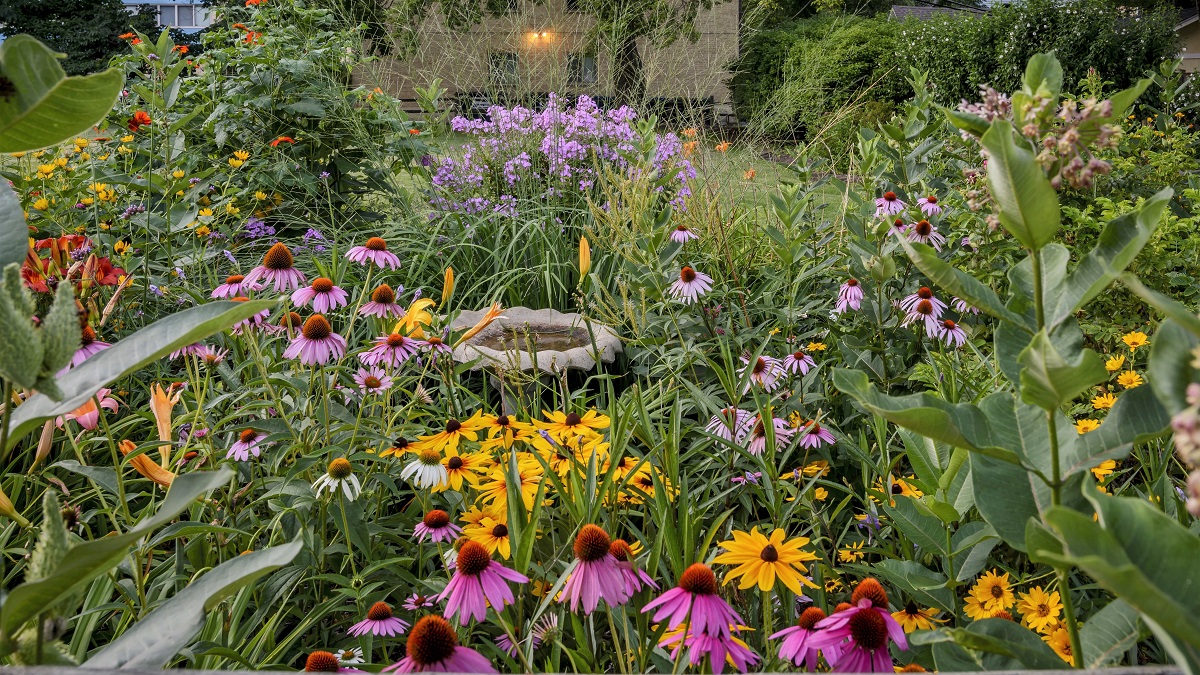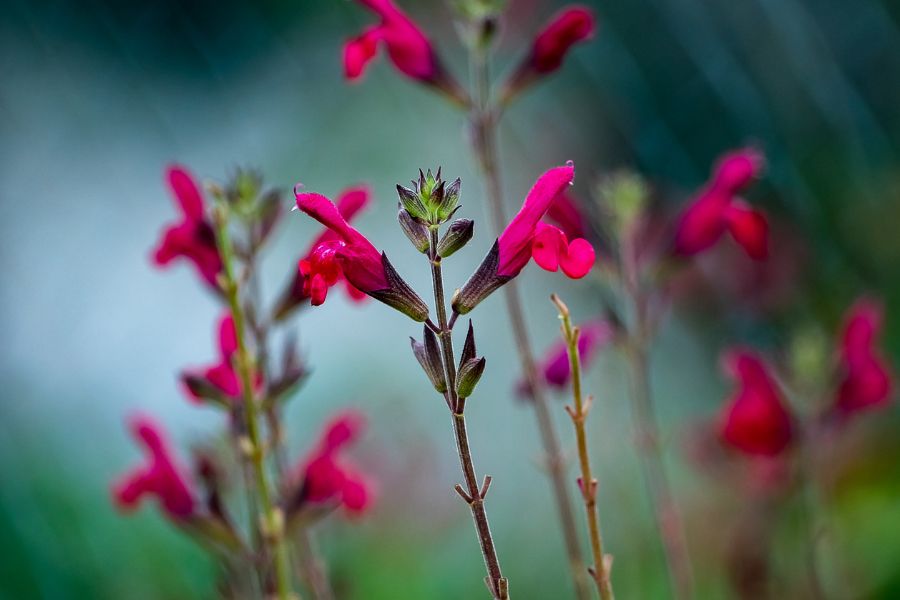From Festive Flora to Native Blooms: Embracing the Beauty of Your Local Ecosystem
From Festive Flora to Native Blooms: Embracing the Beauty of Your Local Ecosystem

The vibrant hues of holiday poinsettias, the delicate fragrance of lilies, and the cheerful blooms of tulips – these are the flowers that often grace our homes during special occasions. While these exotic imports add a touch of festive cheer, they might not always be the most sustainable or ecologically responsible choice.
As we become increasingly aware of the environmental impact of our choices, a growing number of people are turning to native plants for their landscaping and floral needs. Native blooms not only offer a unique and captivating beauty but also contribute to the health and resilience of our local ecosystems.
Related Articles: From Festive Flora to Native Blooms: Embracing the Beauty of Your Local Ecosystem
- Feathered Friends: The Common Little Birds Of East Coast Australian Cafes
- The Dreamtime’s Echoes: How Aboriginal Culture Shaped Australia’s Federation
- Unpacking The Complexities Of Aboriginal Land In Australia: A Geographical And Historical Perspective
- Unveiling The Tapestry Of Indigenous Lands: An Interactive Map Of Aboriginal Nations
- Is "Aboriginal" Offensive? Navigating The Complexities Of Terminology
The Ecological Importance of Native Plants
Native plants are those that have evolved and adapted to a specific region over thousands of years. This long-term co-evolution has created a delicate balance between plants and the local insects, birds, and other wildlife that depend on them.
Here’s how native plants contribute to a healthy ecosystem:
- Food and Shelter for Wildlife: Native plants provide vital food sources for pollinators like bees, butterflies, and hummingbirds, as well as seeds and berries for birds and small mammals. Their unique structural features also offer shelter and nesting sites for various wildlife.
- Soil Health and Water Conservation: Native plants have deep root systems that help stabilize the soil, prevent erosion, and improve water infiltration. This, in turn, helps conserve water resources and improve overall soil health.
- Pest and Disease Resistance: Native plants are naturally resistant to local pests and diseases, reducing the need for chemical pesticides and herbicides that can harm the environment.
- Biodiversity Support: By planting native species, we contribute to the preservation of biodiversity, ensuring the survival of a diverse range of plants and animals.

The Beauty of Native Blooms
Beyond their ecological benefits, native plants offer a captivating array of colors, textures, and fragrances. From the vibrant purple of California poppies to the delicate white of the Eastern white trillium, the beauty of native blooms is as diverse as the landscapes they inhabit.
Creating a Native Garden
If you’re looking to embrace the beauty of your local ecosystem while creating a sustainable and eco-friendly garden, here’s a step-by-step guide:

- Identify Your Region: Begin by understanding the specific climate, soil type, and growing conditions of your region. This will help you choose native plants that are well-suited to your area.
- Research Native Plant Species: Explore local nurseries, garden centers, and online resources to discover the native plants that thrive in your region. You can also consult with local gardening experts or join community gardening groups for personalized advice.
- Consider Plant Size and Spacing: Choose plants that are appropriate for the size of your garden and the amount of sunlight they will receive. Ensure adequate spacing between plants to allow for proper growth and air circulation.
- Prepare the Soil: Before planting, amend the soil with organic matter like compost or leaf mold to improve drainage and nutrient content. This will create a healthy environment for your native plants to thrive.
- Plant and Water: Plant your native species during the appropriate season for your region. Water them regularly, especially during the first few weeks after planting, to establish a strong root system.
- Mulch and Maintain: Apply a layer of organic mulch around your plants to suppress weeds, conserve moisture, and regulate soil temperature. Regularly monitor your plants for pests and diseases and address any issues promptly.

The Benefits of Native Plants Beyond Your Garden
The positive impact of native plants extends far beyond your own backyard. By embracing native blooms, you contribute to the overall health of your local ecosystem and the preservation of biodiversity.
Here are some ways native plants benefit the wider environment:
- Pollinator Habitat: Native plants are essential for pollinators like bees, butterflies, and hummingbirds, which play a crucial role in the reproduction of many plants, including food crops.
- Wildlife Corridor: Native plant gardens can act as stepping stones, connecting fragmented habitats and allowing wildlife to move freely through the landscape.
- Water Quality Improvement: Native plants help filter pollutants from stormwater runoff, improving water quality and reducing the impact of urban development.
- Climate Change Resilience: Native plants are adapted to local conditions and can tolerate extreme weather events, making them more resilient to the impacts of climate change.
From Festive Flora to Native Blooms: A Shift in Perspective
As we become more conscious of our environmental footprint, the choice of plants we choose to cultivate takes on a new significance. While exotic blooms may bring temporary joy, embracing native plants offers a more sustainable and ecologically responsible approach to gardening.
By embracing the beauty of our local ecosystems, we can create vibrant and resilient gardens that support biodiversity, improve soil health, and contribute to a healthier planet.
FAQ
Q: Where can I find native plants for my garden?
A: Local nurseries, garden centers, and online retailers specializing in native plants are excellent resources. You can also contact your local botanical garden or conservation organization for recommendations.
Q: How do I know which native plants are right for my region?
A: Consult local gardening resources, online databases, and contact local gardening experts or community groups for guidance. Consider factors like climate, soil type, and sunlight exposure.
Q: Do I need to be an expert gardener to grow native plants?
A: Many native plants are relatively easy to grow and require minimal maintenance. Choose species that are well-suited to your region and growing conditions.
Q: What are the benefits of growing native plants beyond my own garden?
A: Native plants provide food and shelter for wildlife, improve soil health, reduce the need for pesticides, and contribute to the preservation of biodiversity.
Q: Can I still enjoy exotic blooms while embracing native plants?
A: Absolutely! You can still enjoy the beauty of exotic flowers in moderation. Consider incorporating native plants as the primary focus of your garden and using exotic blooms as accents or seasonal additions.
By embracing the beauty and ecological importance of native plants, we can create a more sustainable and vibrant future for ourselves and the natural world.

Closure
Thus, we hope this article has provided valuable insights into From Festive Flora to Native Blooms: Embracing the Beauty of Your Local Ecosystem. We appreciate your attention to our article. See you in our next article!


